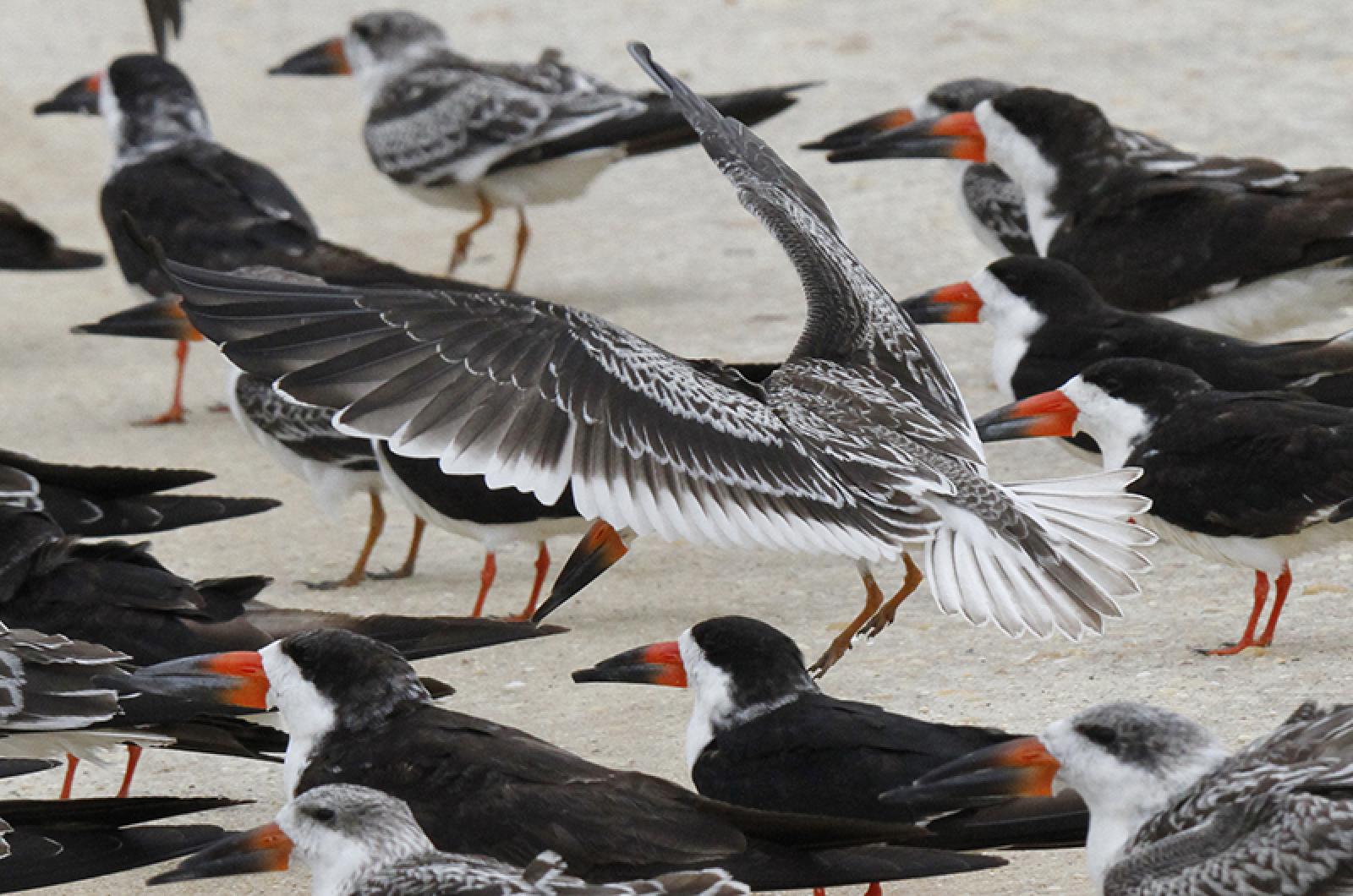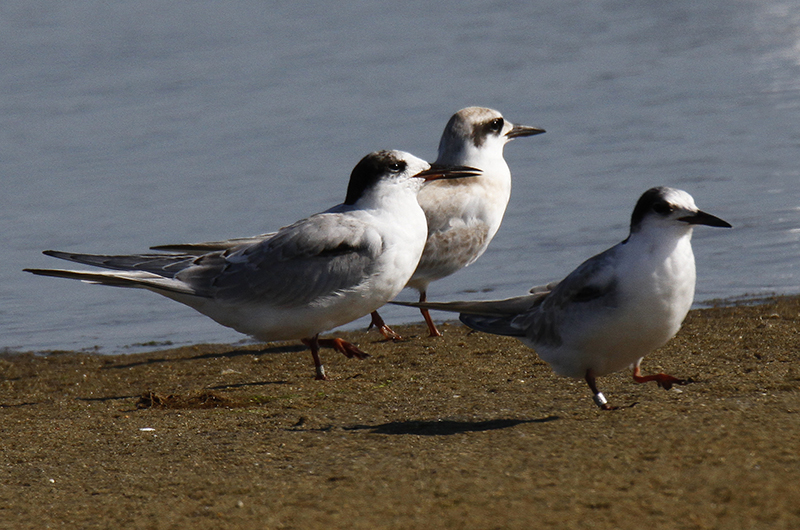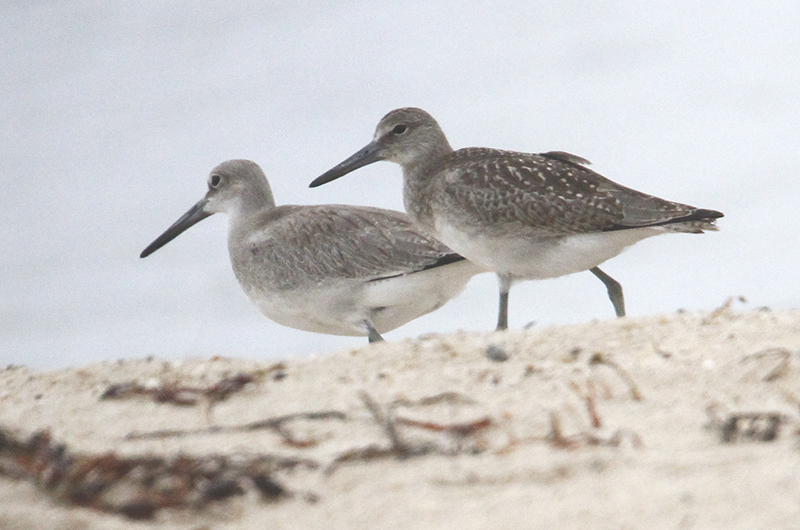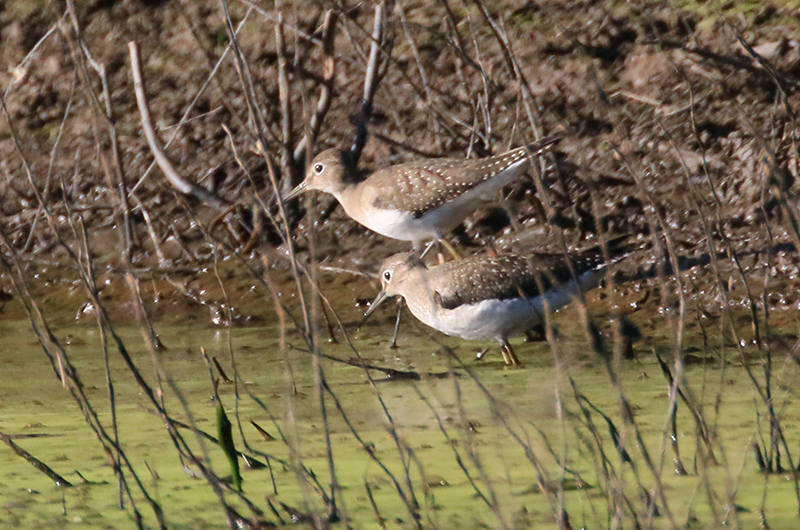The highlights of the week seem to alternate between shorebirds and songbirds. Two weeks ago, this column featured shorebirds, while last week it featured songbirds and now we are back to shorebirds. These shifts reflect our observations more than overall patterns in nature, as both songbird and shorebird migration is in full swing.
Solitary sandpipers are one of this week’s highlights. They are named such because they usually are by themselves, not with others of their kind. An unusual sighting on my Sept. 15 guided birding tour was a group of three solitary sandpipers along the edge of the little pond at the headquarters of the Correllus State Forest. This is probably the first time I have seen more than one of them at a time!
The other intriguing shorebird is the western willet. With practice, this subspecies of the willet is fairly easy to identify; it is larger, paler gray, has a narrower bill, and has less barring on its chest and back than does our more common eastern version. The western willet, as its name implies, breeds out west although some of them migrate eastward to then head south along the Atlantic coast.
The troika of Susan Whiting, Warren Woessner and Bob Shriber found a remarkable 11 western willets on Norton Point Beach on Sept. 15! And there were no eastern willets, although they did also see 16 oystercatchers, 65 black-bellied plovers, five semipalmated plovers, four piping plovers, 27 sanderling, two prairie forms of the short-billed dowitcher, one spotted sandpiper, four greater yellowlegs, 17 black skimmers, one northern harrier, 30 tree swallows and two savannah sparrows. The next day I visited the western portion of Norton Point and saw many of the same species; interestingly, I saw only one western willet in with a flock of five eastern willets. On Sept. 13, Lanny McDowell and Pete and Cathi Gilmore visited Little Beach and spotted a western willet alongside several greater yellowlegs.
Over the weekend there were a dozen killdeer at a farm field in Katama. This flock was observed by Sept. 15 Warren Woessner, Susan Whiting and Bob Shriber, and the next day I observed the same flock. Pete Gilmore, Warren Woessner, Alan Keith and Bob Shriber found a buff-breasted sandpiper at the same farm field on Sept. 13.
In the salt marshes at the southern end of State Beach on Sept. 16, Walt Looney spotted a flock of 33 greater yellowlegs and two ospreys along with oystercatchers, least sandpipers, great blue heron and green heron. On Sept. 15 at Little Beach he added four piping plover, 11 ruddy turnstones, 73 sanderling, 23 greater yellowlegs, willet, semipalmated sandpiper, black-bellied plover, semipalmated plover, common tern, great blue heron, great egret and green heron.
Lisa Maxfield spotted a leucistic black duck on Brush Pond on Sept. 16. and Sharon Simonin spotted a spotted sandpiper on Sept. 15 at the lobster hatchery.
As mentioned above, songbird migration continues apace. The songbird highlight this week is Lanny McDowell’s sighting of a warbling vireo at Thimble Farm on Sept. 12.
On Sept. 16, Susan Whiting spotted a prairie warbler as well as osprey, ruby-throated hummingbird, bluebird, chipping sparrow and belted kingfisher from her yard. On Sept. 12 she added the following migrants: phoebe, Baltimore oriole and five pine warblers.
Bob Morse also reports a hummingbird at Sheriff’s Meadow Sanctuary on Sept 15.
Lanny McDowell and Pete Gilmore visited the Gay Head cliffs on Sept. 15 and their highlights included prairie warbler, common yellowthroat, chipping sparrow, red-eyed vireo and Carolina wren.
The next-to-last Felix Neck Early Birders Program was led by Steve Allen on Sept. 13; it was shortened by the rain but they found kingfishers, oystercatchers, greater yellowlegs and several eastern phoebes.
Red-breasted nuthatches continue to be widespread around the Island. Franklin Nejame found seven of them near Tea Lane on Sept. 15, the same day that Luanne Johnson found one near her Oak Bluffs home. Sarah Mayhew observed 12 of them at the Chilmark Cemetery on Sept. 12 and more on Sept. 10 in her yard. Becky Kern found them at Long Point on Sept. 11.
Pete Gilmore found a sharp-shinned hawk at his house on Sept 11.
Owls are beginning to call pretty regularly now. Mike Savoy heard a screech owl calling on Lake Street in Vineyard Haven on Sept. 14, while both Mary Makepeace and Bob Morse have been hearing them calling in Edgartown recently. And Sara Piazza got a close-up view of a barn owl at Katama on Sept. 13.
I will pose a question in closing out this column: where have the large flocks of tree swallows gone? They are supposed to be here in August and especially September, gathering by the 1,000s to migrate westward across the Island; they then are the most abundant along East Beach and along the south shore. So far the largest congregation of them reported to me is my sighting of 70 of them at Long Pont on Sept. 15.
Southbound songbirds are now migrating through. Please report all your sightings to birds@mvgazette.com.
Robert Culbert leads Saturday morning guided birding tours and is an ecological consultant living in Vineyard Haven.











Comments
Comment policy »